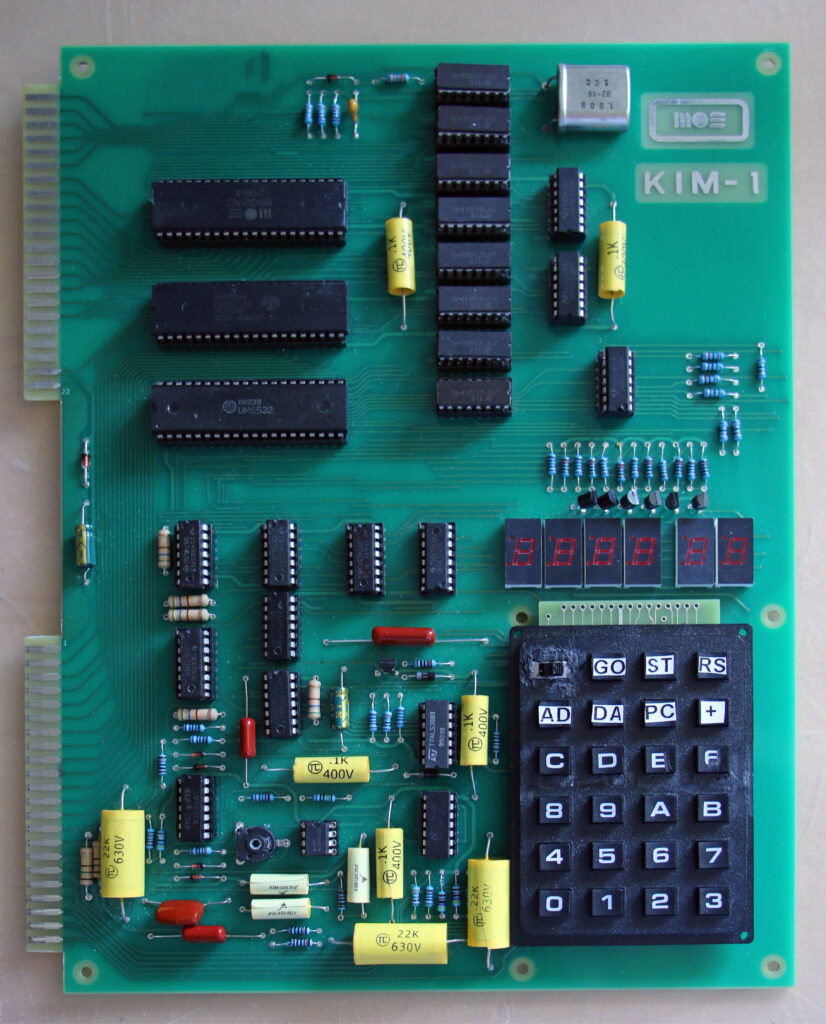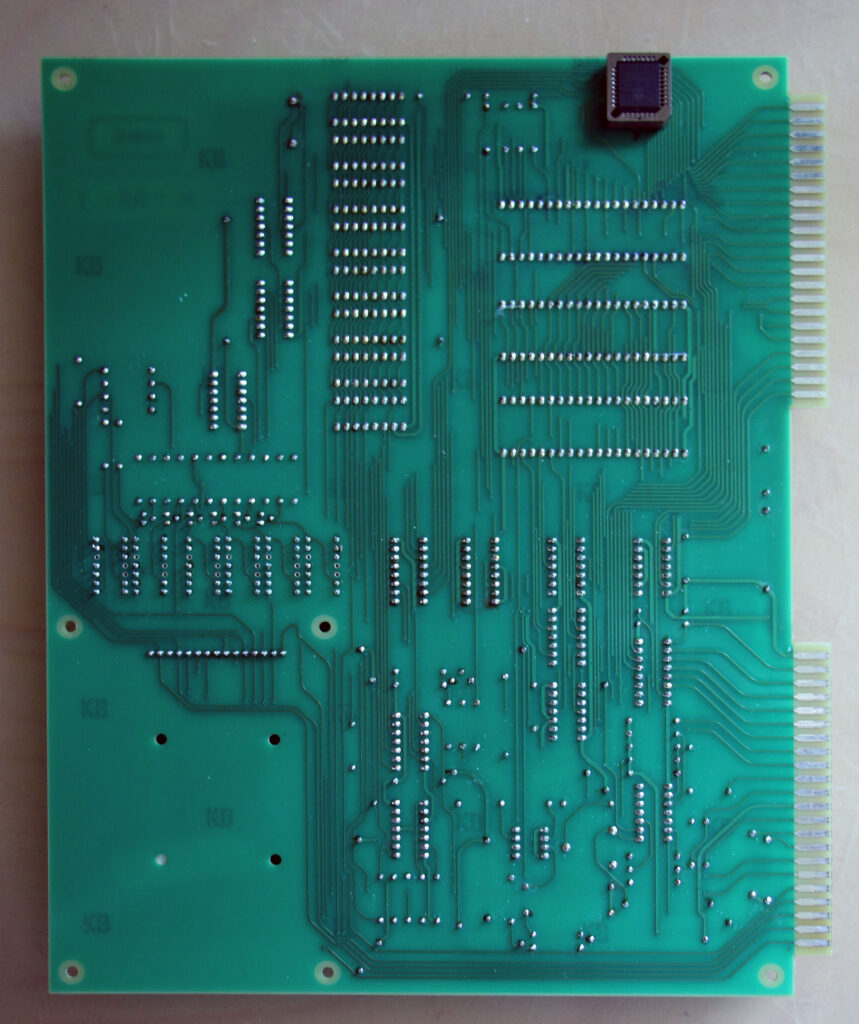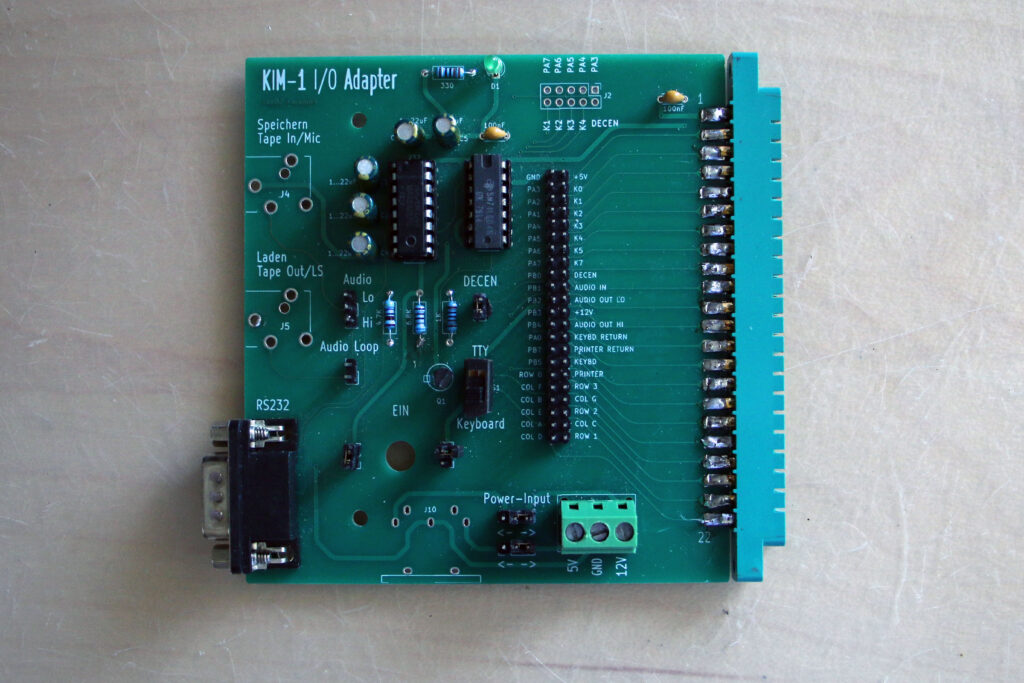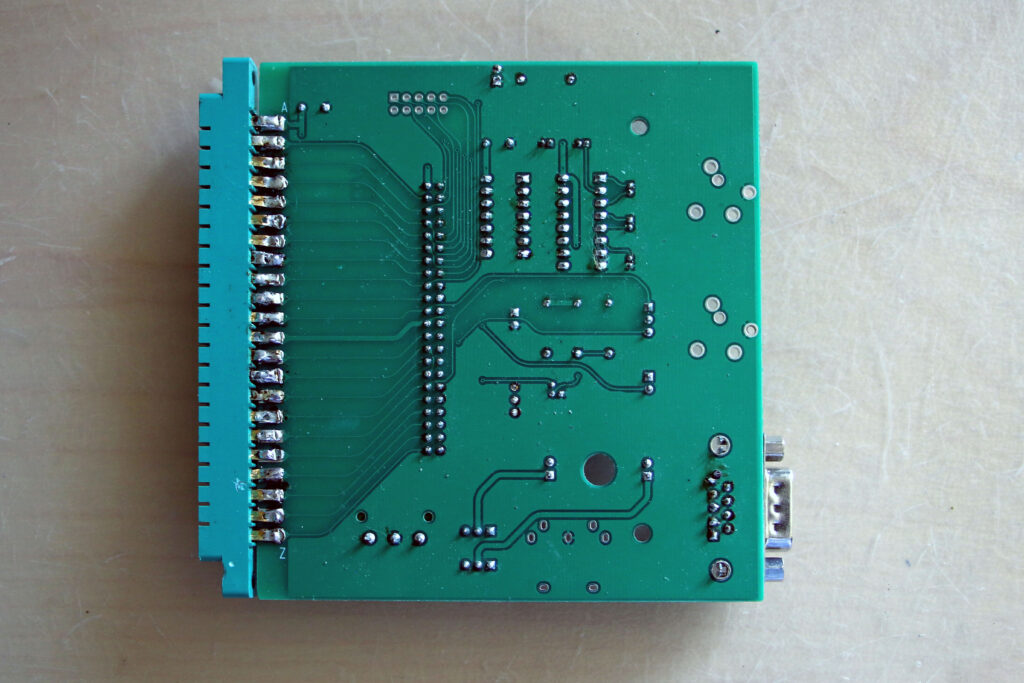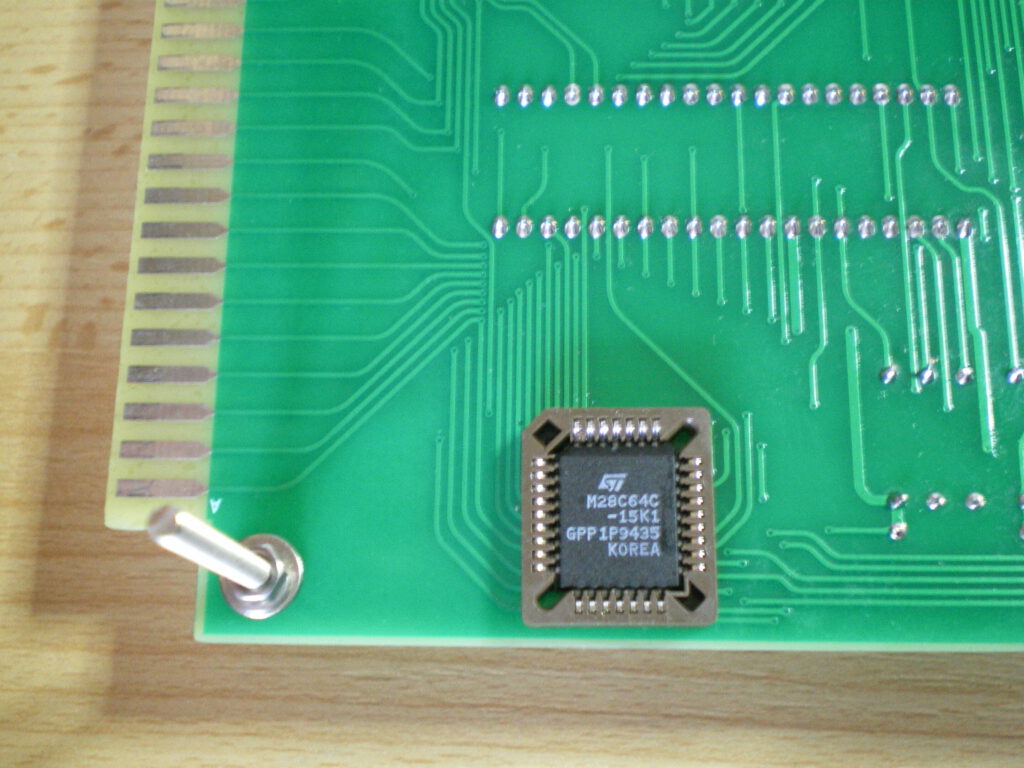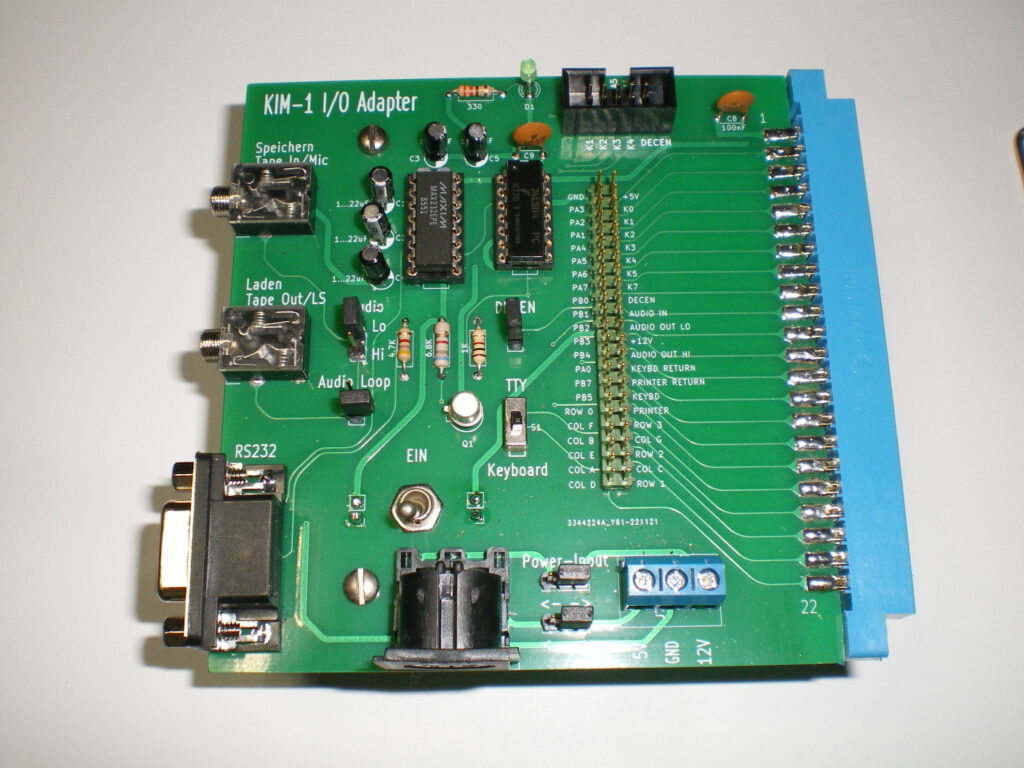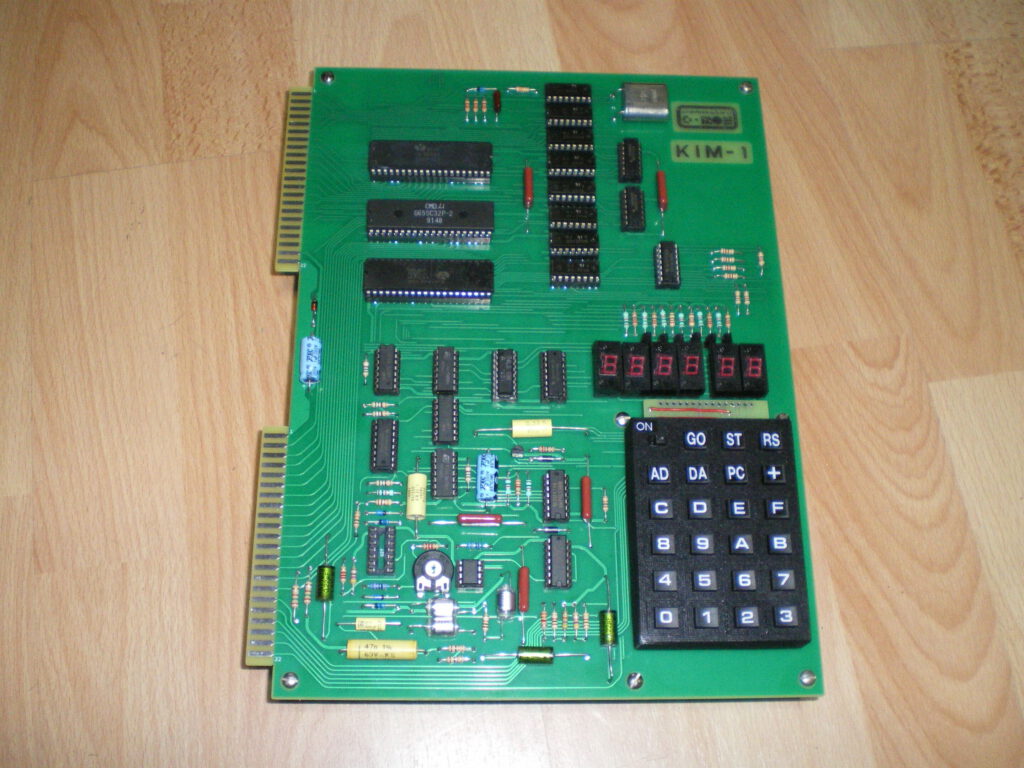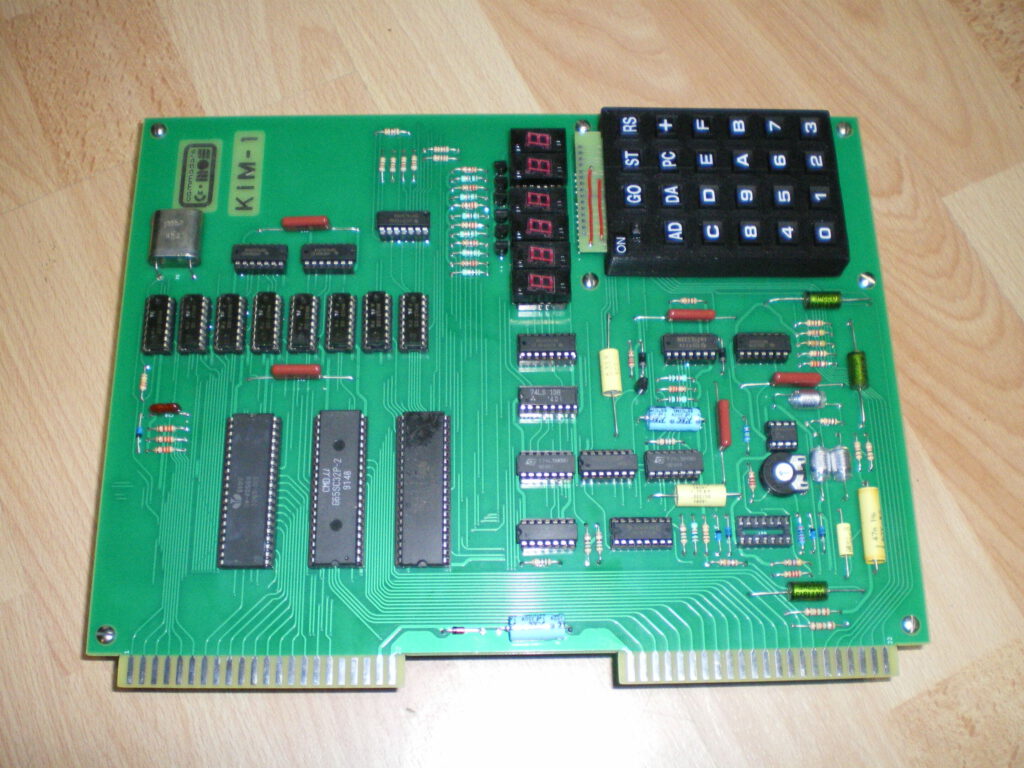Guido Lehwalder gave me photos of his KIM-1 Rev A. Thanks!
Note the different colors of components.
I added these to the KIM-1 Revisions page.
About small SBC systems
Guido Lehwalder gave me photos of his KIM-1 Rev A. Thanks!
Note the different colors of components.
I added these to the KIM-1 Revisions page.
Tor-Eirik Bakke Lunde a.k.a TEBL created several computer systems with detailed documentation.
The RC-ONE is a KIM-1 clone, inspired by the design by Ruud Baltissen, which can be built in a compact to much expanded format.
TEBL separated functionality into separate boards so that each version would cost only around 5$ per piece instead. It means it’s no longer a single board computer, but if it means more people can build it as a fun project then that’s a plus in my book. The main setup does not include the additional 15 I/O lines due to space requirements, but you can add those back to the system by including the 65K Expansion (in addition to the backplane module) if you want to. If you just want to play around with the system and try your hand at machine language coding, you can get started with the CPU board, UI board and a keypad module.
The whole design is documented on TEBLs github page, from circuit diagrams to PCB design.
The manual is an excellent guide to the system, read that first!

Tor-Eirik Bakke Lunde a.k.a TEBL created several computer systems with detailed documentation.
The RC-ONE is a KIM-1 clone, inspired by the design by Ruud Baltissen, which can be built in a compact to much expanded format.
TEBL separated functionality into separate boards so that each version would cost only around 5$ per piece instead. It means it’s no longer a single board computer, but if it means more people can build it as a fun project then that’s a plus in my book. The main setup does not include the additional 15 I/O lines due to space requirements, but you can add those back to the system by including the 65K Expansion (in addition to the backplane module) if you want to. If you just want to play around with the system and try your hand at machine language coding, you can get started with the CPU board, UI board and a keypad module.
The whole design is documented on TEBLs github page, from circuit diagrams to PCB design.
The manual is an excellent guide to the system, read that first!

Ralf (Ralf02, forum64.de) started a thread on the forum64 called Instandsetzung und Nachbau eines Kim-1 in March 2022.
99 pages further of designs and discussions in the thread, delivered a working KIM-1 that is closer to the original KIM-1 than any KIM-1 replica designed. A great achievement and a well deserved compliment to Ralf!
The work of Ralf is not limited to the KIM-1 replica itself. He also designed a KIM I/O module and a 1541 IEC/RAM/ROM module.
Noteworthy is the replica of the KIM-1 keypad.
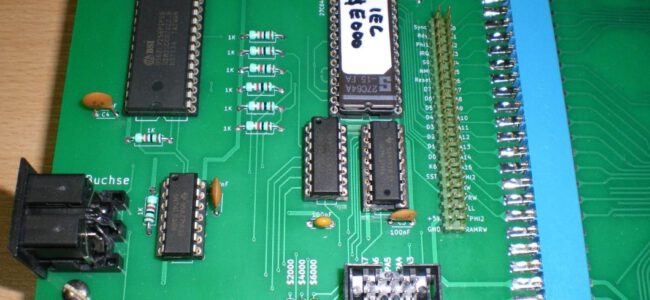
The IEC-floppy/RAM card is a card connected to the Extension connector of the KIM-1 (any KIM-1, original and replica).
The IEC card has to be connected to the I/O card via a flat-cable to access the Kx address decoding signals.
Available downloads:
The IEC interface
Dave McMurtrie, known e.g from the facebook group Commodore International Historical Society, is a KIM-1 and Commodore collector. This year he surprised the KIM-1 users with an implementation of the IEC protocol for the KIM-1. With an IEC interface one can access many Commodore devices like the 1541 floppy disk drive. The interface is simple, a 7406 and some resistors and the typical DIN connector used by Commodore. Dave took the IEC routines from the C64 kernal and added a simple interface to save and load in the KIM-1 method: files have a one byte ID as filename and the same locations as the KIM-1 tape routines 17F5 -17F9 are used for start, end address and ID.
More on the 1541 IEC for KIM-1 can be found here..
How to use (from the German userguide)
Connect a Commodore 1541 floppy drive to the IEC card, Power on the 1541 and Reset the KIM-1, that should also reset the 1541.
The address of the Load/Save routines are:
SAVE: $E148
LOAD: $E000
$17F5 have the Startaddress low byte, $17F6 the Startaddress high.
$17F7 have the Endaddress low byte, $17F8 the Startaddress high.
$17F9 gets the File ID, use $01 – $FE
Do not load or save to/from addresses $0000-$1FF.
Example of storing memory from $0200-$02FF
Enter the following data
00F1 00 (CLD)
17F5 00 SAL
17F6 02 SAH
17F7 00 EAL
17F8 03 EAH
17F9 01 TAPE ID
Now start the save with a ‘Go’ at $E148. The floppy drive should now start and a file with name ’01’ saved.
Load a file into memory
To load the file stored in the example enter the following:
00F1 00 CLD
17F9 01 Tape ID
E000 GO start laod
The 1541 will start and the file “01” loaded into memory.
Press Reset or fill the vectors first:
17FA 00
17FB 1C
17FC 00
17FD 1C
17FE 00
17FF 1C
KB9 Basic
Netzherpes Nills posted a solution to use the IEC routines from Basic:
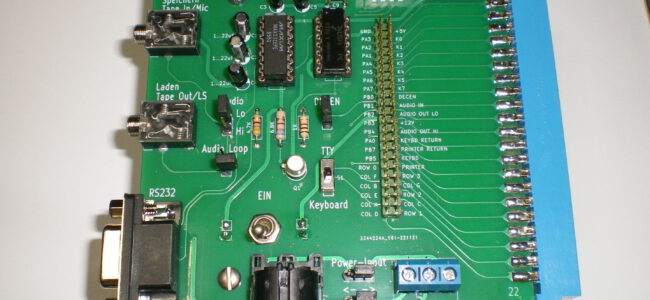
The I/O card has connectors for Power, audio in/output for data save and load, and a RS232 connector. All signals on the Application connector are made available on 2×22 pinheader.
To connect the IEC/RAM/ROM card there is a 2×5 pinheader.
Available downloads:
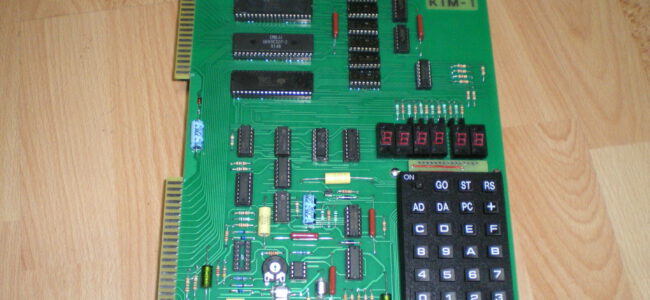
The replica is yet another implementation of the idea from my Dutch friend Ruud Baltissen: Build a KIM-1 with 6532s replacing the 6530-002/003.
What makes this replica special is:
The keyboard is the best replica of the KIM-1 keyboard ever seen, see the KIM-1 replica keyboard page for details.
Ralf made available the gerbers of the Nachbau KIM-1 PCB and wrote a (in German) construction guide.
Here are the available downloads:

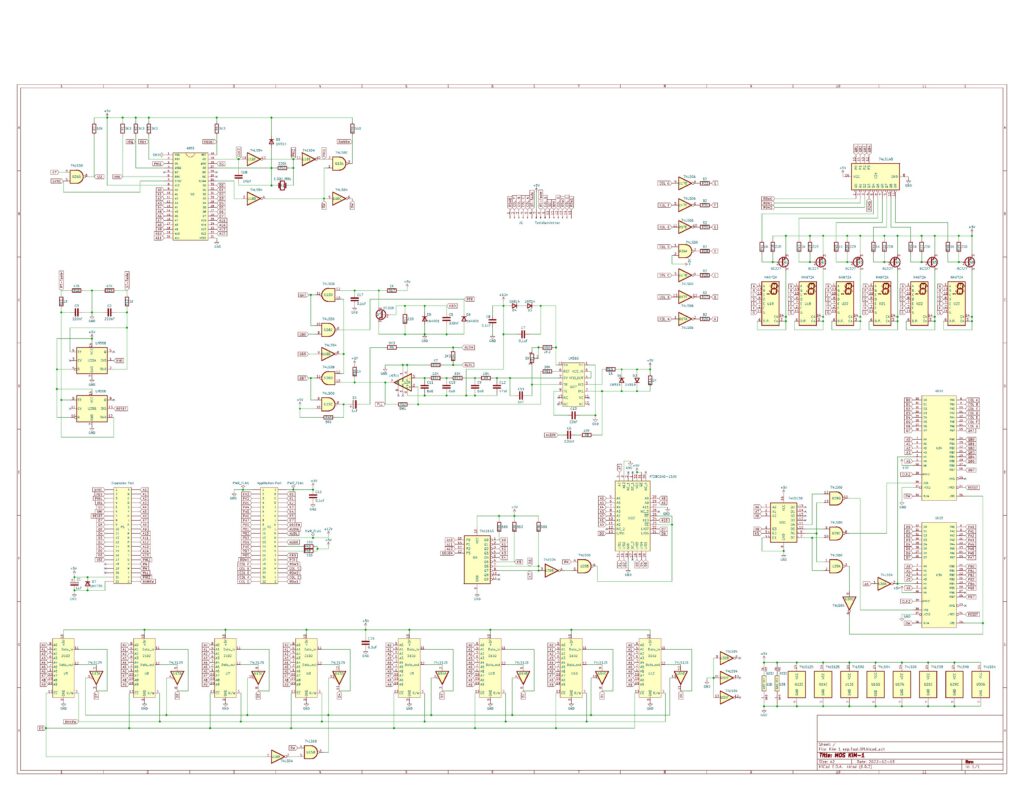
KIM-1 Nachbau Circuit diagram
Bare PCBs (thanks Micha!), not the latest, but will give an operational KIM-1
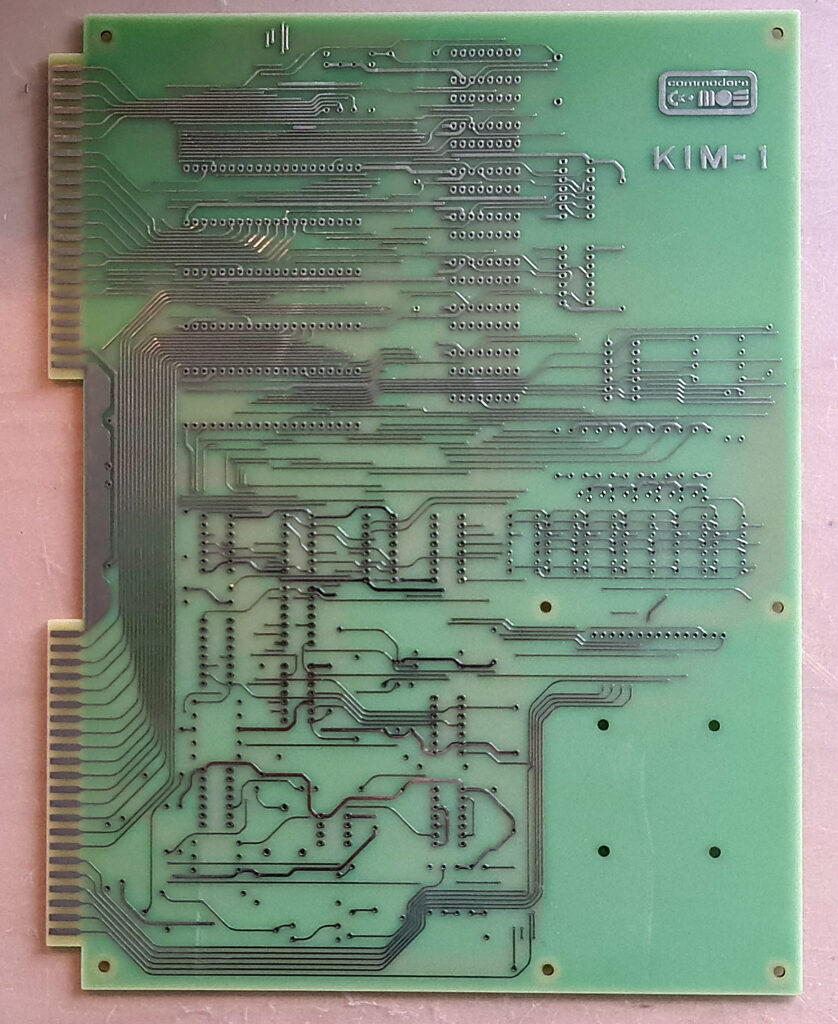
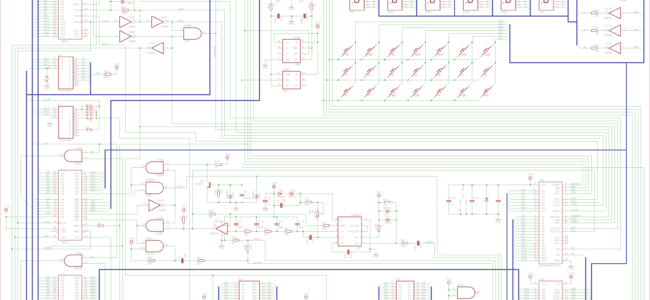
Ruud Baltissen started the whole KIM-1 Replica world by publishing a page many years ago about Building a KIM-1
All replica’s, from the MICROKIM to the Nachbau followed his design.
Replicated here the are relevant text and schematics by Ruud.
The goal of this project is to rebuild the KIM-1. This isn’t “Just take the schematic of the KIM and go ahead!”. The KIM-1 uses two 6530s that are custom ICs and therefore cannot be bought in any shop. This project uses replacement parts.
The troubleshooter: 6530
As said, the KIM-1 has two 6530s on board. For more info about this IC, please read about the 6530 here. Anybody who is a little bit familiar with the hardware market can tell you that you cannot buy the 6530 as a regular part. And the 6530 is a custom IC: Commodore made various types but all were branded 6530. For example, the 6530 found in the CBM 4040 drive is different from the ones of the KIM. Even the two 6530s of the KIM itself are different: in this case it is the content of the builtin ROM.
Happily enough there is another IC available that can be used as replacement: the 6532.
The 6532 has 16 I/O lines, an internal timer and 128 bytes of RAM onboard, but no ROM. For this project we’ll use an external EPROM as replacement. The pin out of the 6532 is completely different but that should not be a problem.
Another difference is that a 6532 has pin PB6 available where a 6530 hasn’t. See it as a bonus as I haven’t found any reason how it could jeopardize our project.
The 6530 can generate a IRQ but in case of the KIM-1 this feature isn’t used. The main reason is that pin PA7 is needed to output the signal and it is used for other things. The 6532 has a separate IRQ output. I used two jumpers, J54 and J5, to enable someone to use this function if needed.
The last and major difference however lays in the way the registers are selected:
function: RS: A6: A5: A4: A3: A2: A1: A0: R/W:
RAM 0 x x x x x x x x
DRA 1 x x x x 0 0 0 x A
DDRA 1 x x x x 0 0 1 x B
DRB 1 x x x x 0 1 0 x C
DDRB 1 x x x x 0 1 1 x D
PA7, IRQ off,
neg edge 1 x x 0 x 1 0 0 0 F
PA7, IRQ off,
pos edge 1 x x 0 x 1 0 1 0 G
PA7, IRQ on,
neg edge 1 x x 0 x 1 1 0 0 H
PA7, IRQ on,
pos edge 1 x x 0 x 1 1 1 0 I
read interrupt
flag 1 x x x x 1 x 1 1 E
read timer,
IRQ off 1 x x x 0 1 x 0 1 J
read timer,
IRQ on 1 x x x 1 1 x 0 1 K
Clock / 1,
IRQ off 1 x x 1 0 1 0 0 0 L
Clock / 8,
IRQ off 1 x x 1 0 1 0 1 0 M
Clock / 64,
IRQ off 1 x x 1 0 1 1 0 0 N
Clock / 1024,
IRQ off 1 x x 1 0 1 1 1 0 O
Clock / 1,
IRQ on 1 x x 1 1 1 0 0 0 P
Clock / 8,
IRQ on 1 x x 1 1 1 0 1 0 R
Clock / 64,
IRQ on 1 x x 1 1 1 1 0 0 S
Clock / 1024,
IRQ on 1 x x 1 1 1 1 1 0 T
In total 5 address lines are used, meaning 32 registers. But 11 of the 19 registers have one or more mirrors.
Read: J E J E K E K E J E J E K E K E Write: F G H I F G H I L M N O P R S T R/W: A B C D A B C D A B C D A B C D
As we can see, the last 16 registers equal the 16 of the 6530 itself. So now we have to develop some logic which will do the following:
Conclusion:
ROM and RAM
Here we have a luxury problem. We only need 2K of (EP)ROM like the 2716. The problem is that the 2716 is hard to find and more expensive then the 2764 or its bigger brothers. When we use a bigger EPROM we could tie the unused address lines to GND.
The same problem occurs with the RAM. In this case I have chosen for a 62256, a 32 KB RAM. This looks like a massive overkill but see later.
If we have to use bigger RAMs or EPROMs anyway, it is quite easy to use other parts of that chip by OR wiring the CS line with more Kx outputs of the main 74145. In case of the EPROM we also can connect switches to the surplus address lines and have the advantage of a multi-KERNAL system.
Extra address range
KIM-1 only supported an address range of 8 KB in the first place. The pin DECEN at the Userport can be used to extend that range but HAS to be connected to GND for the original configuration. The idea is that external cards can use this input to alter the range.
I added an extra 74145, IC7, and two jumpers that enable the user to make a more efficient use of the hardware. Both jumpers, J2 and J3, have to be closed to start with.
If you don’t want to use the 74145 at all, only close jumper J1.
The first thing one can do is to let the binary start at address $F800. Your self built KIM will still behave as usual. Now you can add your own RAM from address $0000 on up to $E000 and the only thing you have to do is remove jumper J2.
If you are only interested in adding RAM, a better idea is to use the original one, IC4, the 62256 32 KB RAM. You only have to remove the jumpers J13..17 and to close one or more pair of pins of jumper block J18. By closing all four pair of pins you make use of the full 32 KB.
Jumper J3 is only needed if you want to expand your self built KIM even further and want to use, for example, the $E000/$FFFF range for (EP)ROM.
Schematics of the new KIM-1
What are the major differences with the original schematic?
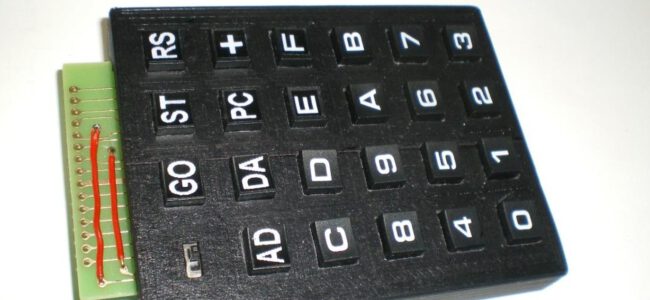
Construction of a nearly exact KIM-1 replica keyboard.
Original version: Design, images and original text in German by Ralf (ralf02, forum64.de), from the KIM-1 Aufbau anleitung, and KIM-1 Keypad by user hackup, October 30, 2022 on thingiverse
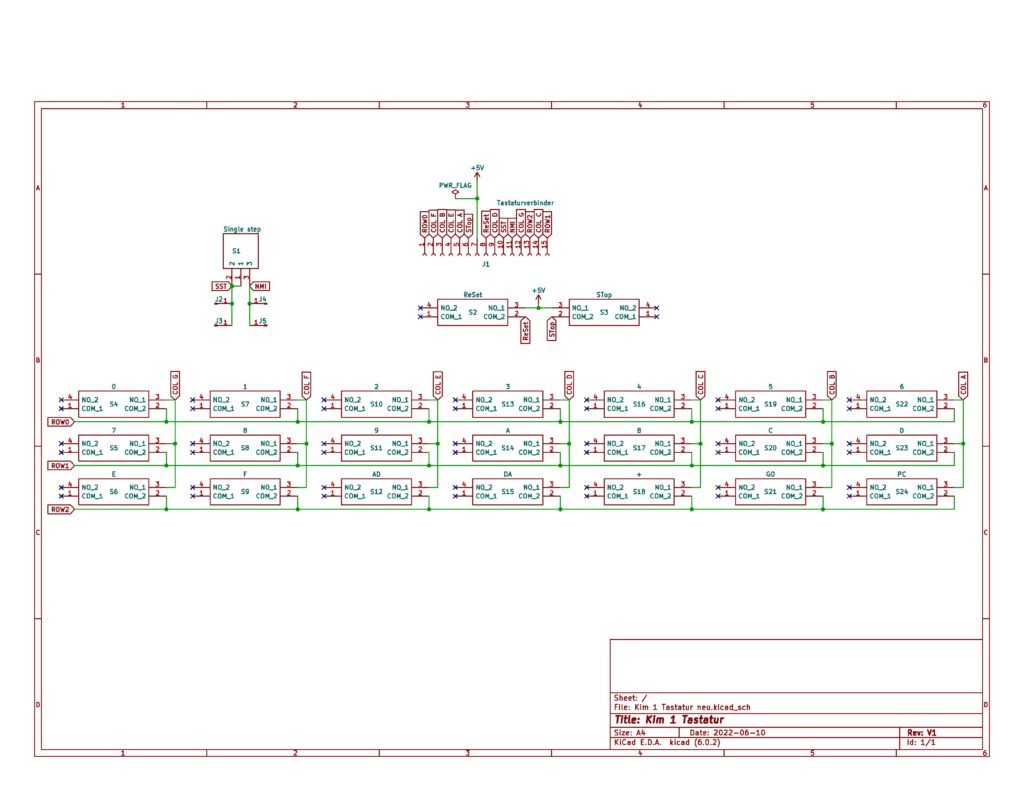
Circuit diagram of the Keyboard PCB
For the keyboard construction you need the following parts:
The keyboard PCB has to be gold plated (ENIG). With tin-plated PCBs the contact from the keys is not reliable.
Downloads made available by Ralf:
First dismantle the two keyboards and cut the two rubber contact mats as seen in the next picture. Keys 0-0 and A-D have the right lettering, make the other with a letter printer white on black.
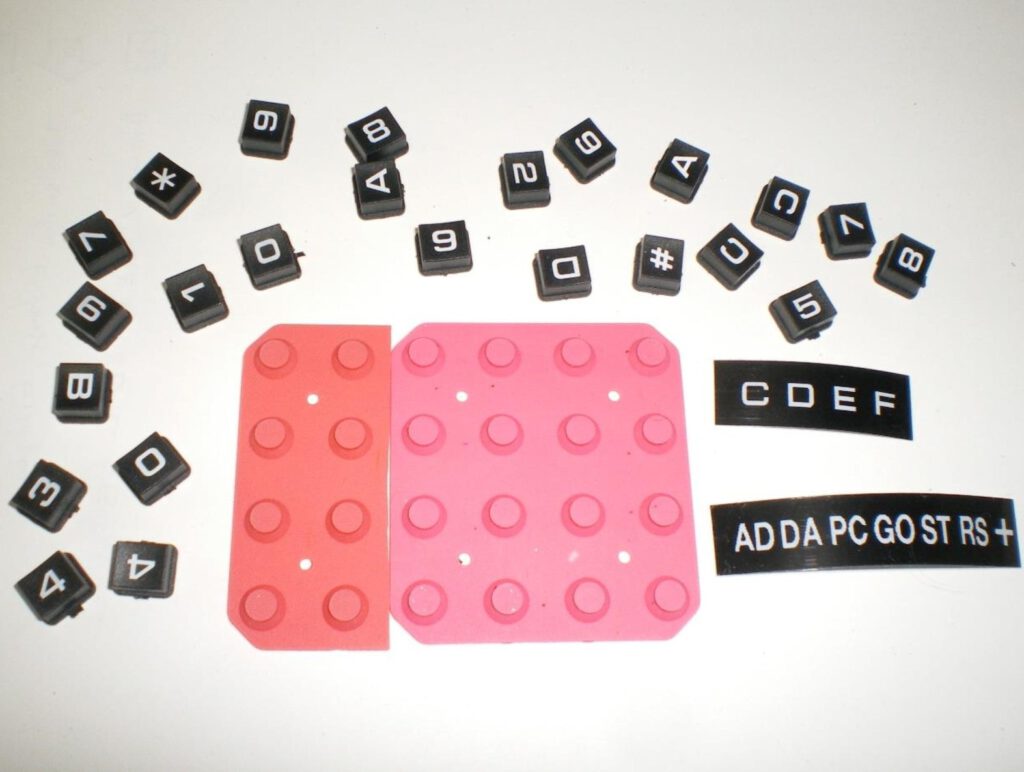
Place the keycaps in the 3D printed case:
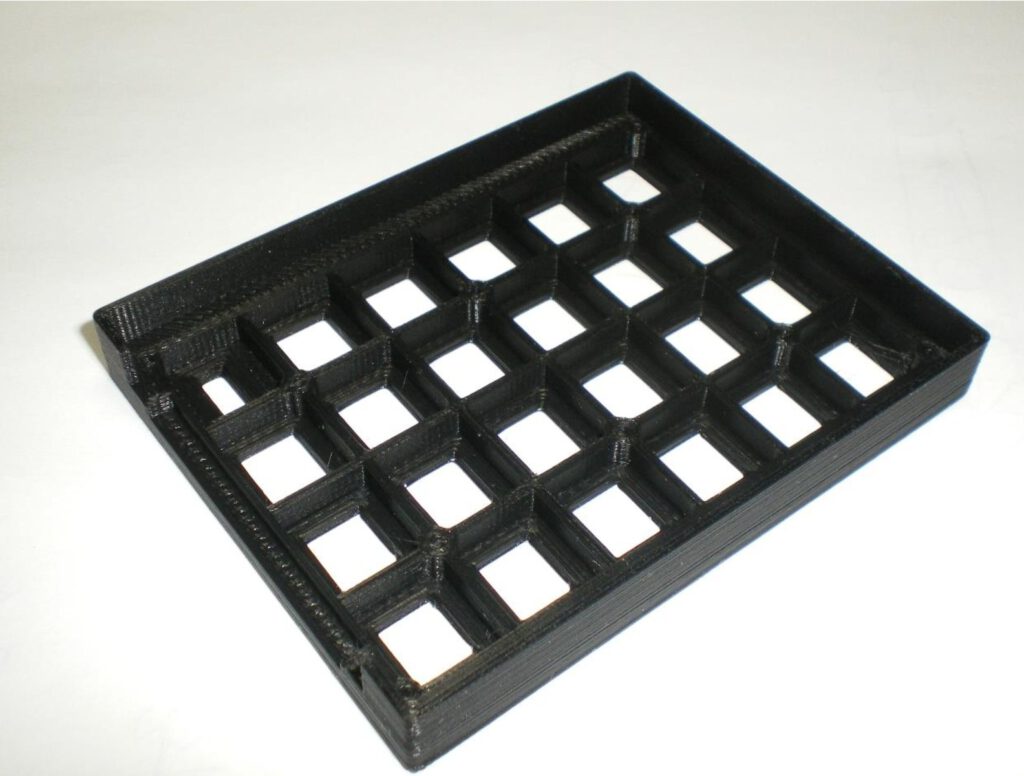
Now solder the slide switch and the pinheader on the PCB. Cut the rubber mat on the location of the slide swithc. Put the mat in the 3d printed case and fix with 6 screws:
Next place the four M3 screws in the holes in the PCB and the parts in the case. Now place the PCB on the 1 pin pinheader and fix the four screws with washers from the bottom.
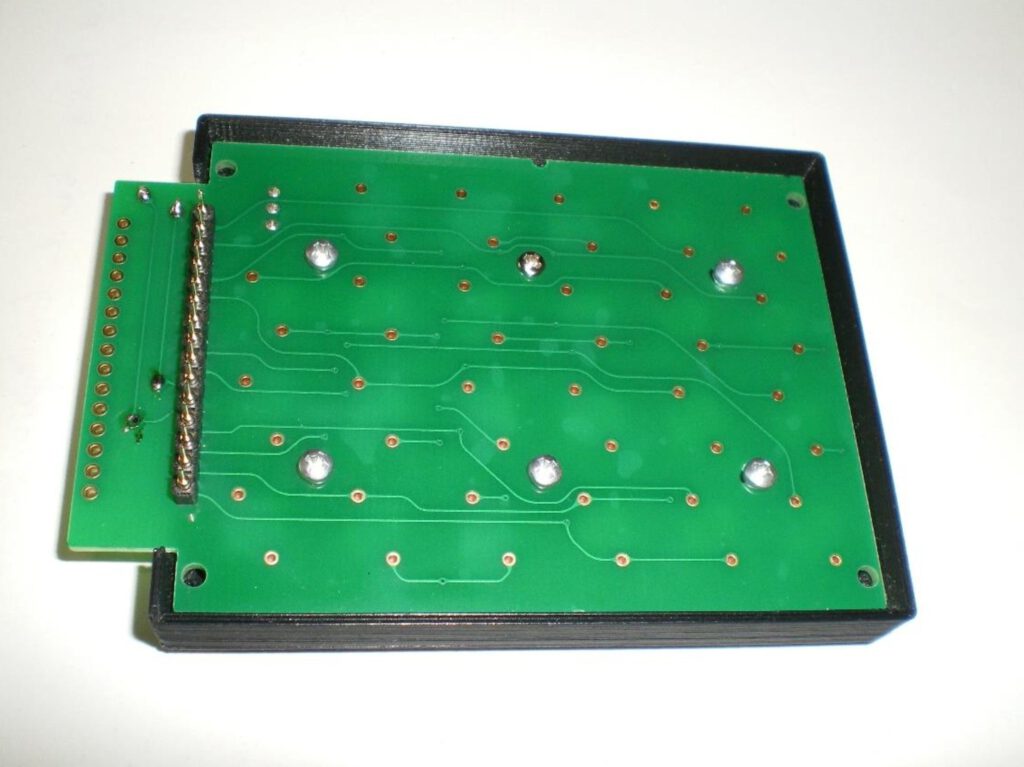

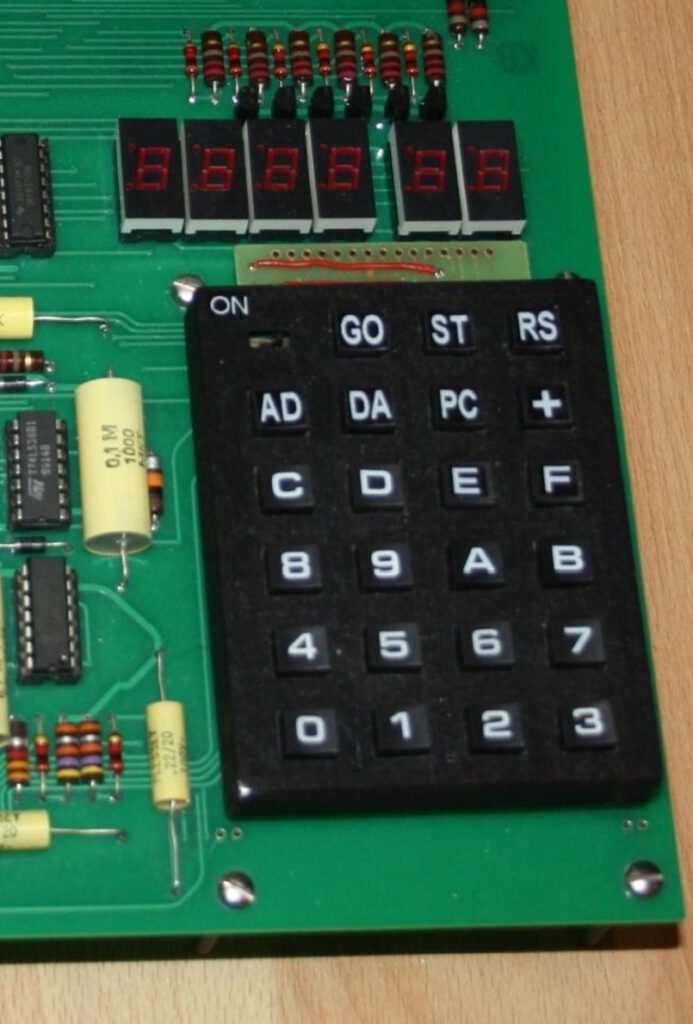
The two reds are only for decoration, to make it look like as on the KIM-1.
Next photos credit to Bigby (of forum64.de):
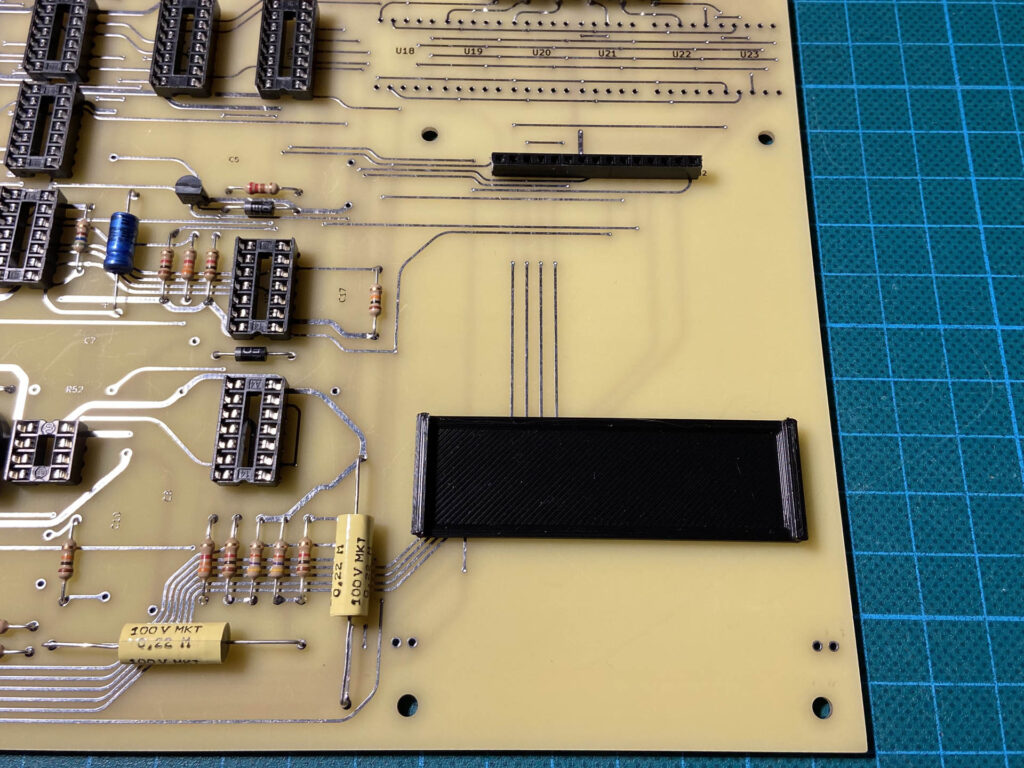
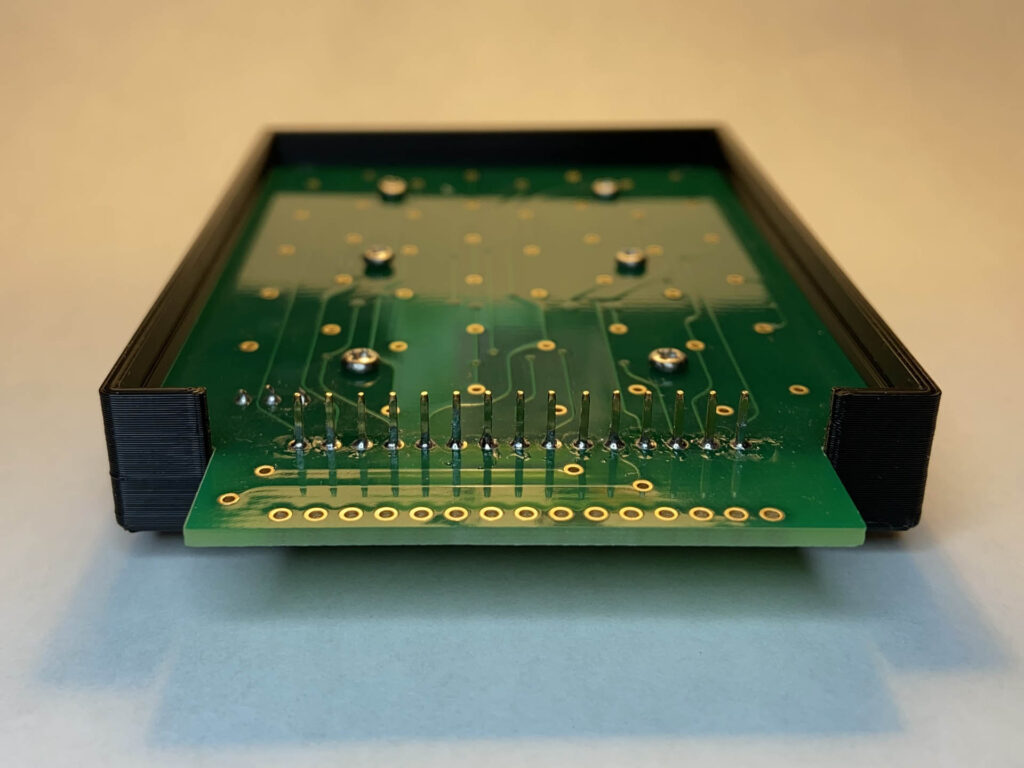
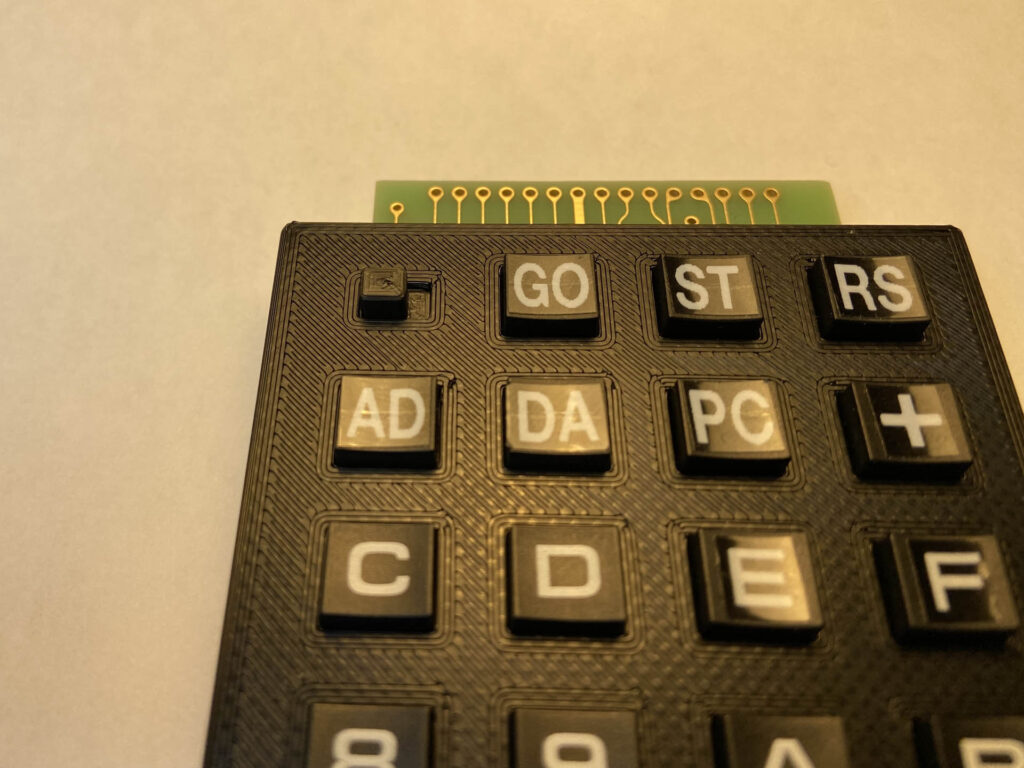
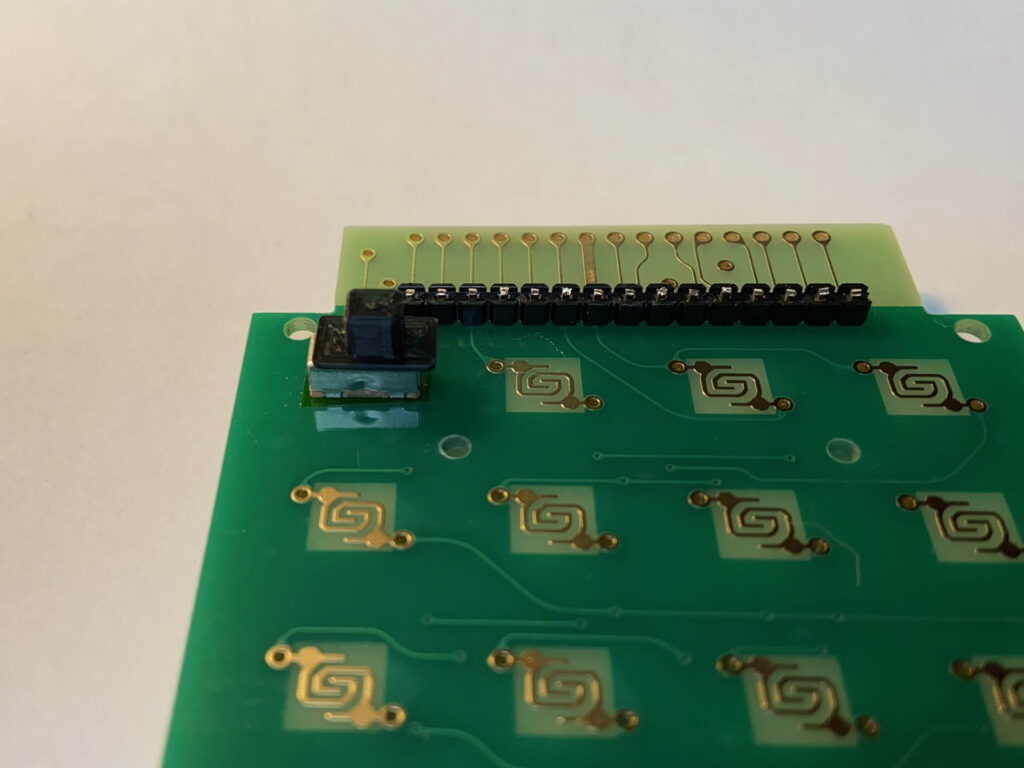

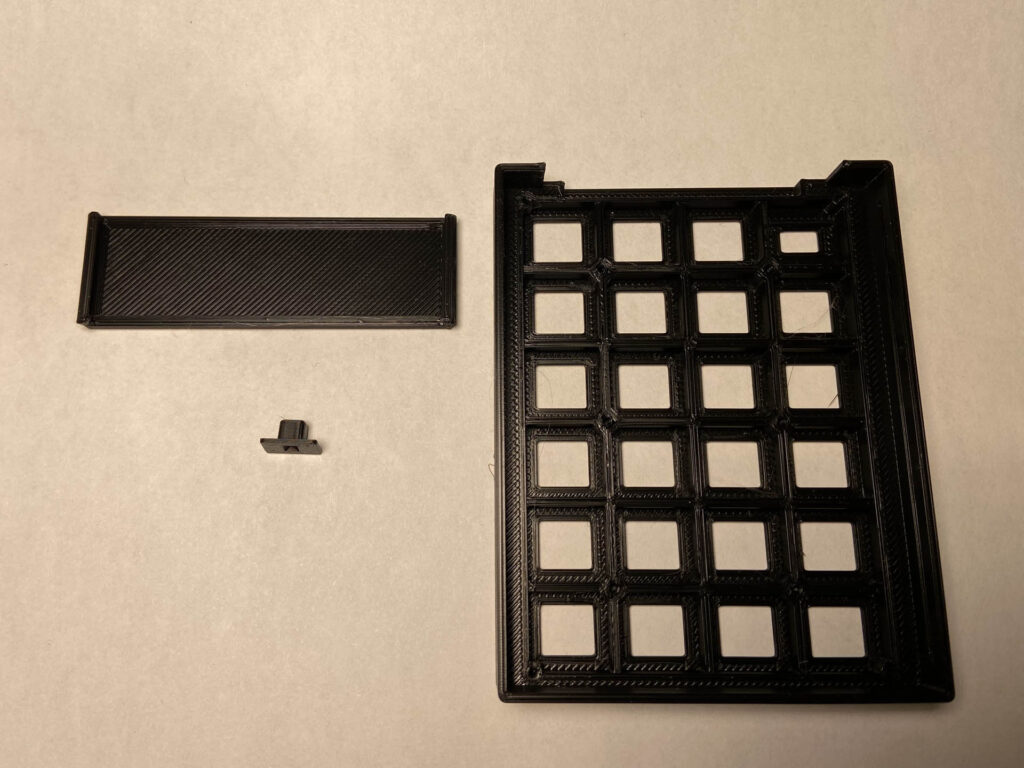
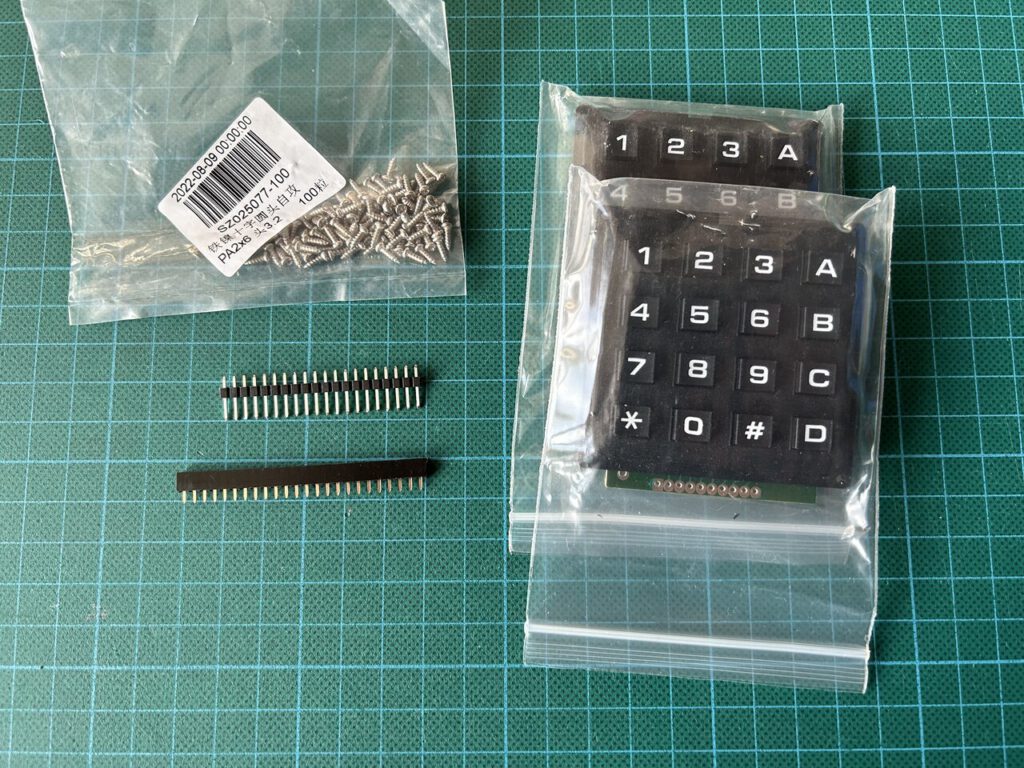
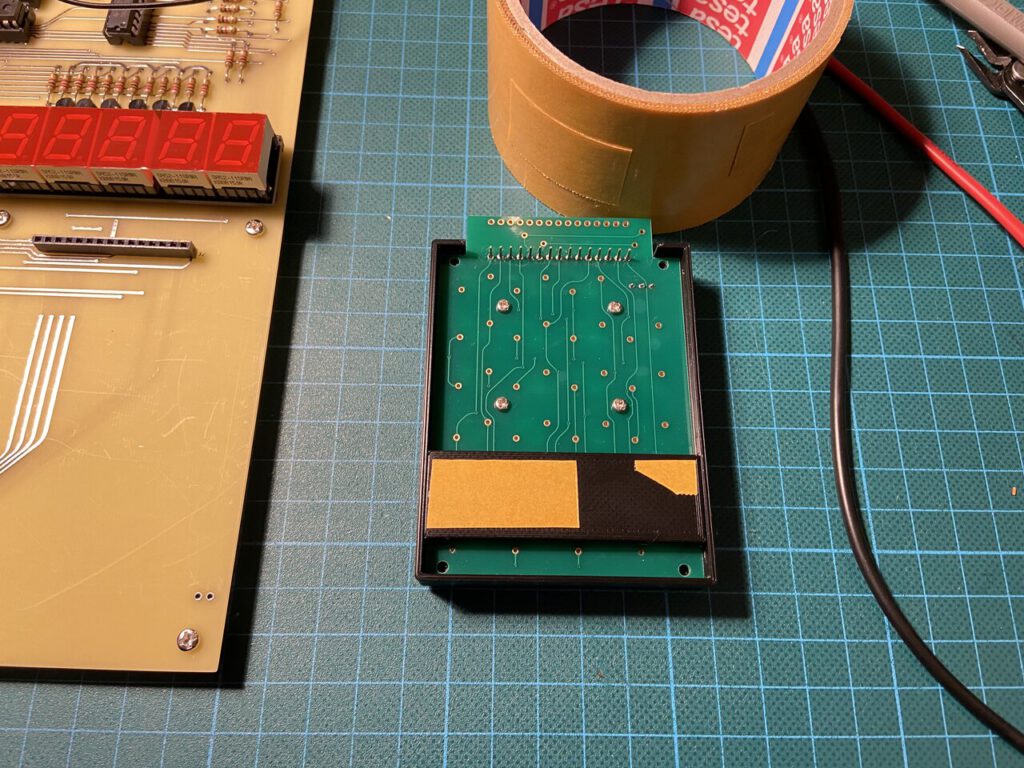
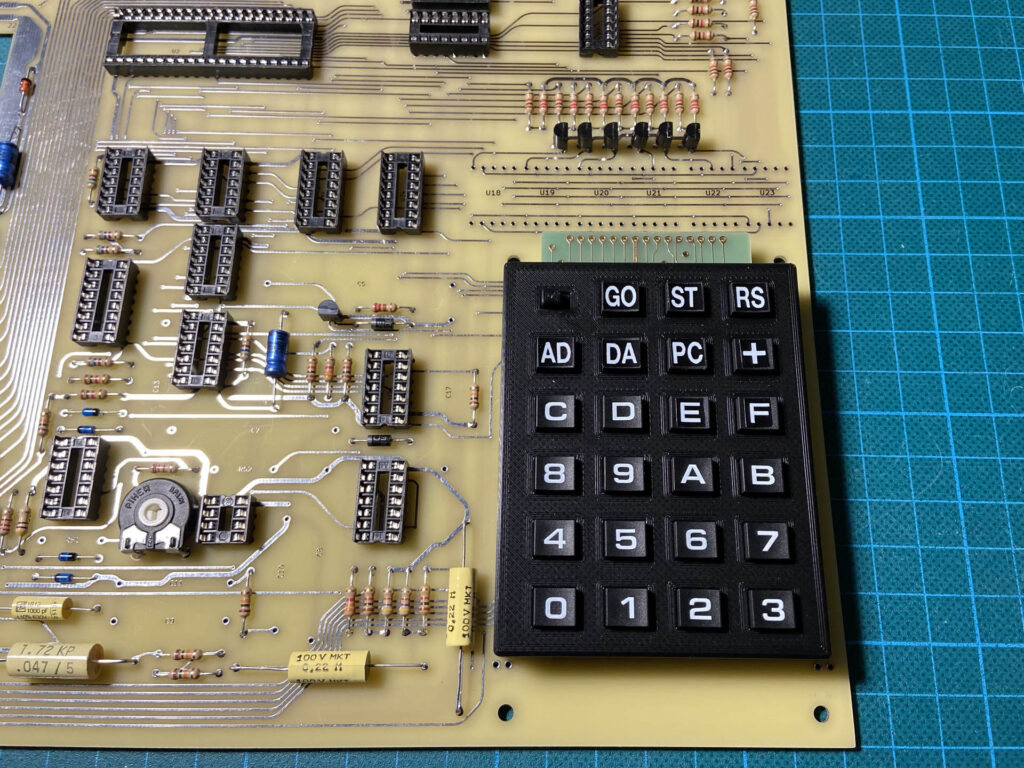
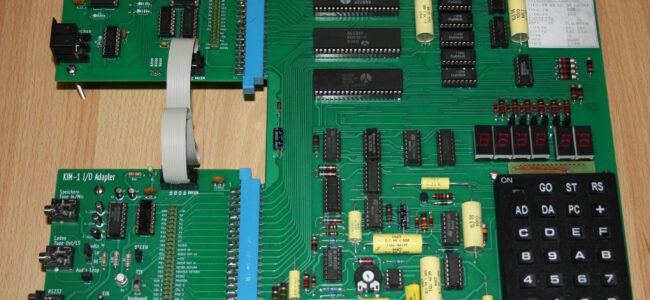
Ralf (Ralf02, forum64.de) started a thread on the forum64 called Instandsetzung und Nachbau eines Kim-1 in March 2022. 99 pages of designs and discussions and contributions by many in the thread delivered a working KIM-1 that is closer to the original KIM-1 than any KIM-1 replica designed. A great achievement and a well deserved compliment to Ralf and the thread authors!
The work of Ralf is not limited to the KIM-1 replica itself. He also designed a KIM I/O module and a 1541 IEC/RAM/ROM module.
Noteworthy is the replica of the KIM-1 keypad.
On the following pages these boards are introduced.
The most current version of the ‘Nachbau’ is on the formu64.de thread.
